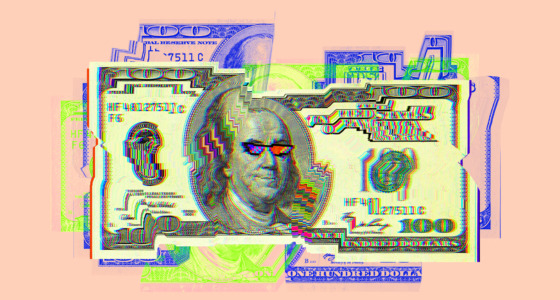

Money market investors are mindful of market volatility and how it could affect their returns. But how can you gauge market volatility? Here, a volatility index enters the scene, serving as a standard for measuring market volatility. One of these indices is the India VIX, which we will discuss in more detail below.
Briefly about market volatility
Volatility, for the uninformed, refers to moments of uncertainty when securities prices see significant swings. Volatility is frequently linked to price declines. However, it can also occur during an increase.
What creates turbulence? As shared ahead, several factors can influence market movement, including but not limited to economic and political factors, performance by sector and industry, and enterprise performance. Volatility is expected in the long term as stock prices fluctuate up and down depending on internal and external factors. These periods are uncomfortable yet necessary.
India VIX index meaning
The full form of India VIX is the India Volatility Index. It gauges the level of volatility that investors anticipate for the NSE index over the ensuing thirty days.
How is India VIX calculated?
India VIX is a simple calculation of the price range investors expect in the market in response to significant market news. When India VIX’s value is low, there is less anxiety in the market, which means investors are more willing to invest. On the other hand, a more significant value is a sign of growing uncertainty and anxiety concerns.
Although the volatility index was first introduced to the Indian market in 2008, it first appeared on the Chicago exchange in 1993. It assisted in determining the extent of market fear.
Note! On the NSE website, you can get instant access to the India volatility index (VIX) live chart.
What is India VIX in the stock market?
In India, the volatility index in NSE is known as VIX. The computation considers the special price, the stock’s market share price, the expiration date, risk-free rewards, and fluctuation. By analyzing the best bid and asking prices for the out-of-the-money, current, and relatively close Nifty options contracts, the India VIX index calculates the level of volatility that investors anticipate.
Volatility and VIX move in the inverse direction. In contrast to a lower VIX, which suggests minimal fluctuations in the Nifty, a greater VIX implies greater market volatility.
Let’s use an example to clarify.
Example
Let’s say the VIX number is 15. In other words, investors anticipate price fluctuations between +15 and -15 over the next 30 days. The theoretical range of the VIX is somewhere between 15 and 35. Comparing any figure about or even below 15 to a value greater than 35, which denotes substantial market movements, represents moderate volatility. Nifty previously had a negative association with India VIX, meaning Nifty increased if VIX fell below 15.
The India VIX, a measure of market choppiness, indicates whether investors are afraid or callous in the short term.

Understanding India VIX in the stock market
Before investing, understanding the market choppiness today with the India volatility index (VIX) is essential. Evaluating whether investors are confident or afraid is critical because all important lateral market movements are accompanied by market choppiness. Moreover, there is also a correlation between India VIX and Nifty.
A lower India VIK indicates the asset’s reduced volatility and a consistent price bracket. A higher India VIX means significant instability and a shortage of investor confidence to trade within the present range of the market. Typically, the widening of the current scope hints at a robust directional shift in the market.
What does India VIX indicate?
Volatility and India VIX share a positive correlation; it means India VIX is high when volatility is high. For example, the Indian VIX was extremely low — below 30 since 2014 — in the period leading up to the famous occasions of 2020, showing stability. But in 2020, the India VIX value exceeded 50. The stock index hovered at the 8000 level and lost close to 40% of its value.
It’s essential to keep in mind, though, that the India VIX needs to indicate trend direction. It only records variables that are rising or declining in volatility. As a result, investors with more equity exposure closely monitor the value of the India VIX to know the appropriate share prices for purchasing in the stock market.
There are instances of extreme volatility and periods when the market moves in a tight range. But India’s VIX tends to fall back to its mean, between 15-35. There can also be a situation when India’s VIX reaches zero. In this situation, the index can either double or come to zero.
What is India VIX in trading?
India VIX tracks short-term volatility over 30 days. As a result, it calculates options with expirations in the current month and the following month. It is presumptively true that the option premium at the Nifty strike price reflects the implied volatility of the entire market.
India VIX averages the order book of Nifty options as a reliable indicator of market volatility. You don’t need to learn the complicated statistical formula that is used. But it would be best if you comprehended what planning deals entail.
India VIX provides a reliable indicator of market risk for day traders. It gives traders information on when stock prices increase or decrease as market volatility changes. For instance, intraday traders risk having their stop loss threshold hit whenever the India VIX value increases. As a result, they can lower their leverage or raise their stop loss.
In the big scheme of things, rising India VIX provides a realistic indication of increasing uncertainties. Institutional investors can boost their hedging by heavily relying on long positions to act in the market. Long-term investors aren’t concerned by short-term volatility.
The volatility metrics significantly affect options traders’ buy and sell choices. For instance, when volatility increases, options become more lucrative and beneficial for buyers. On the other hand, during periods of low volatility, options usually lose value as they approach expiration.
Few strategies exist for trading volatility. When the market becomes more volatile, traders can purchase straddles or strangles. However, this trading method is pricey. As an option, one can heavily invest in India VIX index futures without worrying about the direction of the market.
Nifty and India VIX are negatively correlated. Nine years after VIX’s birth, Nifty showed the opposite movement when shown on a timeline. As a result, Nifty rises when the VIX number is low and vice versa. It provides honest insight into market behavior for investors.
Mutual fund and portfolio managers boost their exposure to high Beta portfolios when the value of the India VIC peaks. Once the VIX value is low, they would choose low Beta stocks similarly.
India VIX is crucial for options writers. They can take on infinite risk and receive restricted gains when the VIX is high (premium). In just a few trading sessions, out-of-the-money option contracts can become at-the-money or even in-the-money contracts as the market moves through a period of significant volatility.
Example
Let’s examine an example to understand better how option writers incorporate India VIX value into contracts. Let’s say an options writer chooses to create a contract for ABC stocks at a prevailing price of Rs 310 for Rs 275. He intends to sell 3000 shares at a premium of Rs 10 on a contract with a seven-day expiration.
Due to the current market volatility range, contract prices may drop to Rs 230 in two days. Therefore, his loss will occur after five days and could be categorized into the following ways to understand the distribution of costs which eventually play a role in improving actual communications. The Strike cost would be about Rs. 275, while the spot should be Rs 230, and the extra charges would only cost Rs. 10.
He suffers a loss of (230+10) or 35 rupees. Each deal costs him Rs. 105,000 in total. As a result, he will ideally refrain from creating the contract or demand a hefty fee if he does.
The bottom line
India VIX is an index that measures expected volatility in the market. It is an effective method for estimating projected stock price movement. High India VIX readings historically coincided with a significant share price and indices change. It is also essential to set the premiums and pricing for derivative contracts.
FAQs
What is market volatility?
Significant price movements in the equity market’s stock index are referred to as market volatility. High-volatility securities are typically riskier.
The stock price standard deviation from the same security or index is calculated.
What is the volatility index of Nifty (VIX)?
India VIX is a volatility index based on the Nifty Index Option prices. It was launched in 2008. It is determined to use the most substantial bid and ask prices for the near- and mid-month Nifty derivative contracts that are out-of-the-money and traded on the NSE market. It indicates investors’ perception of volatility soon.
What does India VIX suggest?
The India VIX index tracks market turbulence. A higher India VIX rating denotes intense market volatility, while a lower one denotes market stability. India VIX and Nifty have historically demonstrated a strong negative association, which means that when volatility increases, Nifty goes down, and vice versa.
What is the value of India VIX?
India’s VIX normally fluctuates within a normal range of 15-35. Under specific conditions, it can also reach incredibly low or high values. The index could either double in value or become zero when the India VIX value reaches zero.
The India VIX, however, is non-directional, which means it cannot predict how the market will move. Simply put, it shows investors preparing for volatility over the following thirty days.
Who can use India VIX?
Many market participants, such as investors, traders, derivatives writers, and portfolio and mutual fund managers, use India VIX.
They watch the VIX movement to modify their market sentiment and beta exposure.
How does India VIX affect stock prices?
India VIX is a gauge of market turbulence.
Nifty typically declines when India’s VIX increases, signaling a favorable time to purchase equities.
What is an India VIX value in the share market?
Since the India VIX fluctuates between 15 and 35, a figure greater than 35 denotes a significant level of volatility. During times of increasing market instability brought on by fear factors, the value of India VIX increases.
What is the relationship between India VIX and Nifty?
India VIX and Nifty showed a significant inverse relationship. What happens if India’s VIX increases, you may ask? Nifty decreases if IndiaVIX increases. In contrast, as VIX declines, Nifty increases, and investors have increased confidence due to declining volatility.
How to trade in Nifty VIX?
One strategy to trade Nifty VIX is buying exchange-traded funds tied to the volatility index.











